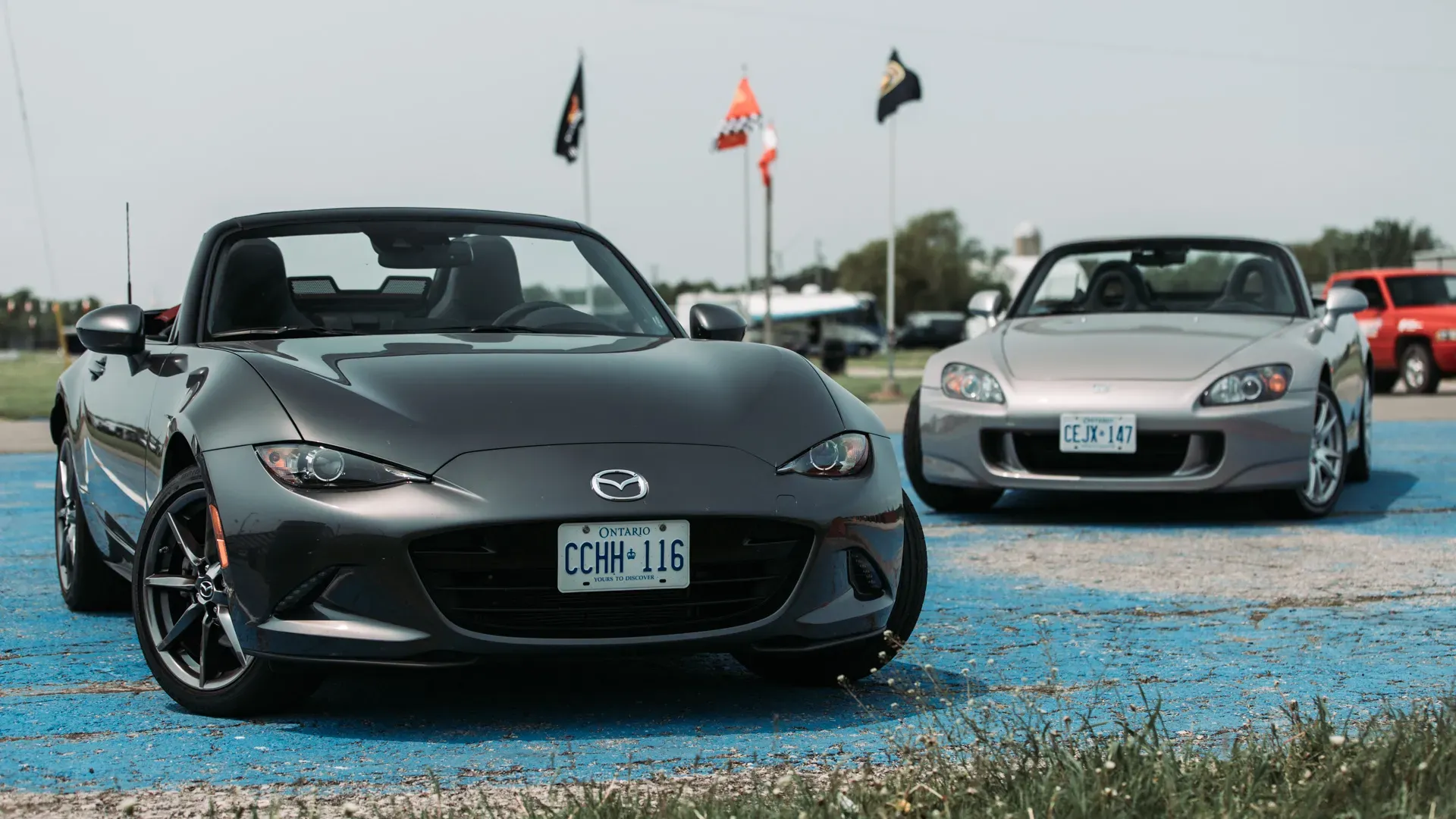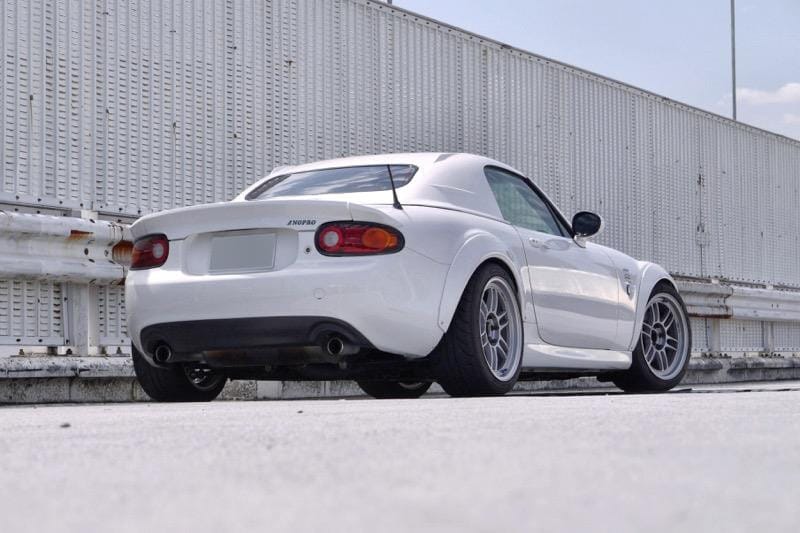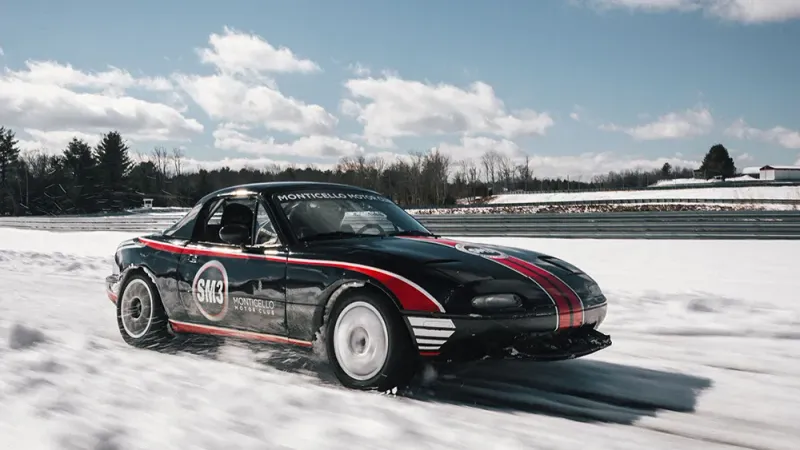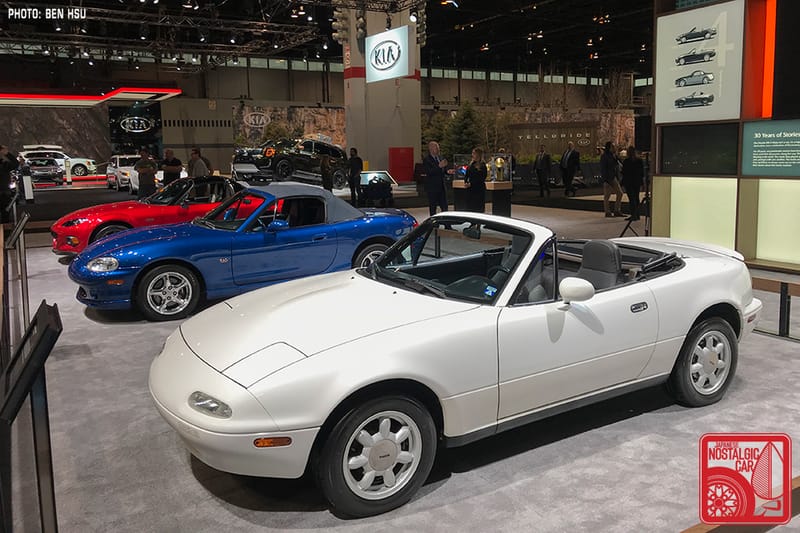Miata vs. S2000: A Tale of Two Roadsters
Think Miata as the golden retriever—friendly, playful, and agile—while the S2000 is the greyhound, bred for high-rev thrills at 9,000 rpm. Both deliver wind-in-your-hair joy but with different personalities. This guide breaks down how each roadster serves up open-top driving bliss.

If the Mazda MX-5 Miata is a golden retriever, friendly, light on its feet, always up for a backroad, then the Honda S2000 is a greyhound that lives for redline, ears pinned back at 9,000 rpm. They chase the same joy (wind, gears, corners) but get there with very different personalities. Here’s the definitive, fun-to-read breakdown to help you pick your flavor of open-top bliss.
At a Glance…
Miata (ND, 2016–present). The modern Miata is a featherweight charmer with limits you can explore daily. The 2019 refresh, often called ND2, bumped the 2.0-liter to 181 hp and raised the redline to 7,500 rpm, making the car feel notably punchier without losing its momentum-car character. In 2022, Mazda added Kinematic Posture Control, a subtle brake-based system that calms body motion mid-corner. It’s sold new today with modern safety gear and infotainment, which makes ownership easy.

S2000 (AP1 2000–2003, AP2 2004–2009). This is the purist’s buzzsaw. AP1’s 2.0-liter loves the stratosphere with an ~8,900-rpm redline, while AP2’s 2.2-liter trades a sliver of top-end mania for a touch more midrange and an 8,000-rpm cutoff. Every S2000 sits on a rigid, 50:50-balanced chassis with double wishbones at all four corners. Production ended in 2009; today it’s a bona fide modern classic.

Specs That Actually Matter
On paper, the S2000 is the headline act: roughly 240 hp (AP1) versus the Miata’s 181 hp (ND2+), with the Honda’s redline stretching higher and its terminal speeds typically stronger on track. The Miata counters with mass, or the lack of it. Many trims land hundreds of pounds lighter than an S2000, and that lightness shows up everywhere: braking, turn-in, and how often you can enjoy the car at sane road speeds. Both post mid-5-second 0–60 mph times in testing, but they get there differently. The Honda sprints with big revs and long legs; the Mazda punches above its numbers because it’s lighter and always on its toes.
Engines & Feel
The Miata’s 2.0 since 2019 is revvy and eager, delivering a cheerful pull to 7,500 rpm and the kind of throttle response that makes second-gear corners addictive. It doesn’t chase the stratosphere like the Honda, but it sounds and feels alive on real roads where torque spread matters more than peak numbers. The S2000 is theater. AP1 is a dopamine hose after 6,000 rpm; AP2 keeps the spirit but adds a little midrange muscle and a slightly lower redline. In both Hondas, you drive by tach needle, short-shifting feels like skipping the main act.

Shifters, Ratios, and More
Both cars have short, rifle-bolt throws that enthusiasts celebrate. The Miata’s shift action is sweet and precise, and the gearing keeps you in the meat of the power on tight roads. The S2000’s shifter is legend, snick-snick mechanical perfection, and its longer legs suit big-rpm runs and track work. Neither offers an automatic, which is exactly as it should be for cars that turn shifting into a sport of its own.
Chassis Design
The Miata is playful neutrality with gentle edges. Steering is quick, the body stays tidy (even more so with Kinematic Posture Control), and the car invites you to nibble at the limit without punishing mistakes. It’s a car that teaches you to be smooth without demanding it. The S2000 is laser-precise. The stiff structure, double wishbones, and near-perfect balance make for crisp turn-in and superb mid-corner honesty. It’s wonderfully communicative but expects proper inputs; especially in early AP1s, clumsy throttle or steering can wake the rear. Drive it clean and it rewards you like few modern cars.

Comfort, Tech, and Storage Issues
The Miata is modern. You get the expected creature comforts and driver aids, plus Apple CarPlay/Android Auto (and even wireless CarPlay on certain years). The cabin is snug but cleverly packaged, with a roof you can fling open or shut with one arm at a stoplight. The S2000 is from the analog era: minimalist, purposeful, and refreshingly free of distractions. Its digital cluster and fighter-jet dash still feel special, but daily drivers may miss contemporary conveniences. Storage is modest in both; figure mid-4 cubic feet for a soft-top Miata (slightly less for the RF) and around five cubes for the S2000, which wins the grocery run by a whisker.
Track Toys, Aftermarket, and Community
If you want to learn racecraft on a budget, the Miata’s ecosystem is unmatched. From autocross to HPDE to full-blown spec racing, there’s a ready-made ladder with deep parts bins and sane consumable costs. The S2000’s hero spec is the Club Racer (CR), with quicker steering, stiffer suspension, a factory hardtop, and functional aero. It’s a track-ready showcase straight from the showroom, now a collector magnet. Both cars enjoy fanatical communities, tech guides, and tuner support; you won’t lack for advice or parts either way.

Ownership Reality Check
The Miata is easy mode: buy new, get a warranty, enjoy plentiful parts and dealer support. Tires and brakes are typically smaller, and cheaper, than the S2000’s, which helps running costs if you track or autocross frequently. The S2000, by contrast, lives on the used market. Clean examples, especially AP2s and the CR, command serious money. Maintenance isn’t exotic, but performance-oriented tires, alignment, and consumables can cost more than the Miata’s equivalents. Think of the Honda as a special-occasion instrument you’ll want to preserve; the Mazda is the daily playmate you won’t feel guilty about wringing out.
Which One Should You Buy?
Choose the Miata if you want new-car ease, modern safety and infotainment, and a car that’s friendly at nine-tenths yet still magical at ten. It’s the quintessential “momentum car,” the one that says, “Let’s go drive somewhere, the somewhere is the point,” and then plays nicely with your commute and your budget. You’ll find endless community support and track-day options without turning your wallet inside out.
Choose the S2000 if you want a high-revving event every time you merge onto the highway. It’s an icon for good reason: the engine sings, the chassis talks, and the shifter is a benchmark. If you already have something sensible in the garage and you’re hunting for goosebumps, the Honda delivers them on command, and may reward you again in the long run as values continue to reflect its cult status.
The Miata is the roadster you can use every day without blunting the magic. The S2000 is the special-occasion katana, more demanding, more dramatic, more likely to make you invent errands just to chase the upper register of the tach. If you need one car to do it all, Miata, hands down. If the practical boxes are already ticked and you crave goosebumps at 8,000 rpm, S2000, absolutely.




